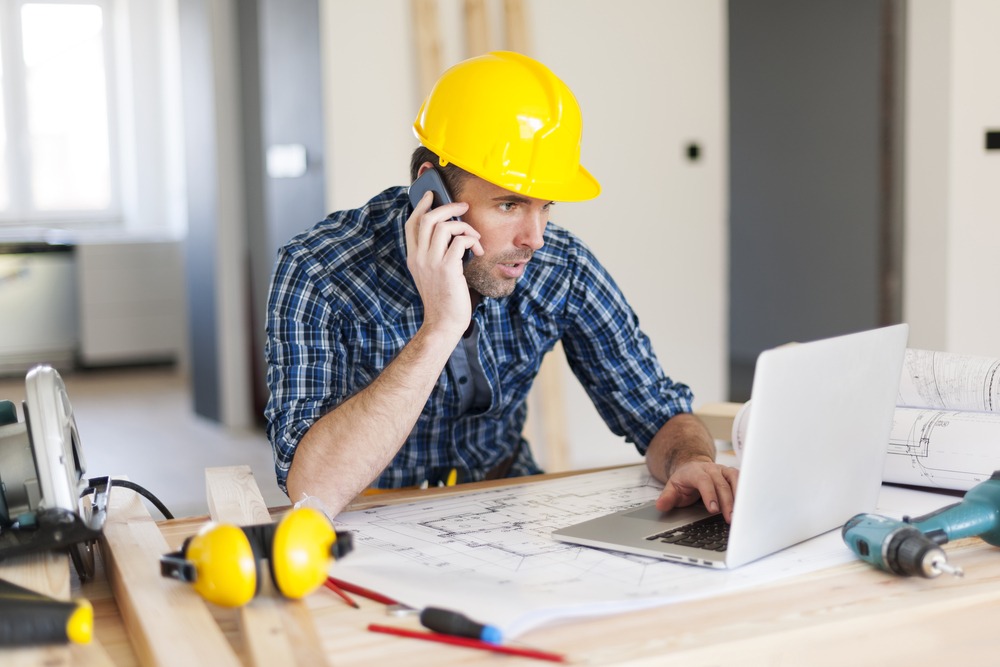ARCHITECTING AN INTERVIEW WITH HOST JEN SEILER
Episode 4: The Impact of Virtual Design and Construction in Design-Build: A Conversation with Brian Skripac
Virtual Design and Construction (VDC) is changing the way we approach architecture, engineering, and construction. Recently, I had the opportunity to sit down with Brian Skripac, Director of Virtual Design and Construction at the Design-Build Institute of America (DBIA), to discuss his career, the role of VDC, and how DBIA is shaping the future of construction.
Brian’s Path to VDC
Brian’s interest in construction started young. Growing up around family members who worked in the trade, he was naturally drawn to building things. “I played with Legos and Lincoln Logs as a kid, and my dad was a carpenter, so I was always around construction. Architecture just made sense for me,” Brian said.
He didn’t start his career with VDC in mind. In fact, VDC and BIM (Building Information Modeling) weren’t even terms back then. But his knack for finding efficient ways to work led him to embrace digital tools and eventually move into a leadership role in VDC.
Brian’s journey took a significant turn in 2005 when he first worked with Revit, a 3D modeling software. He quickly saw how these tools could improve communication and collaboration in construction projects. One of his most memorable projects was with The Ohio State University. His team developed a BIM project delivery standard for the university, which has since become a key tool in managing their facilities to reduce the total cost of operations/ownership. “This standard “is a reference manual for Design and Construct project team members to understand what relevant 3D geometry and data shall be delivered” and helps ensure that all future projects meet high-quality standards, and it’s something we continue to update and refine,” he said.
The Power of VDC in Design-Build
The design-build process is all about collaboration. From day one, everyone involved—owners, designers and builders—works together. This whole team approach is where VDC truly shines.
“VDC is about integrating people, processes, and technology, which fits perfectly with the design-build model,” Brian said. “In a design-build project, the team is brought together from day one, breaking down traditional silos and enabling a more streamlined and efficient project delivery.”
VDC provides a shared digital environment where all stakeholders can access and contribute to the project. This setup not only improves communication but also allows for real-time decision-making, reducing the risk of errors and delays.
Brian’s work with Wexford Medical Mall in Pittsburgh is another great example of VDC in action. Here his team used VDC to deliver a 174,000-square-foot medical office building in just 22 months. “We centered our coordination meetings around the model, which helped us make real-time adjustments and keep the project on track,” he recalled.
How DBIA is Leading the Way in Design-Build
The Design-Build Institute of America (DBIA) defines, teaches and promotes best practices in design-build project delivery, which creates and environment where one entity, the Design-Builder, enters into a single contract with the Owner to provide both design and construction services.. This collaborative method helps projects run more smoothly and efficiently. DBIA isn’t just about pushing a method; it’s about building a community of professionals committed to improving project delivery.
“VDC is about integrating people, processes, and technology to create better project delivery models,” Brian explained. As DBIA’s Director of VDC, Brian focuses on how technology and processes like VDC can enhance the design-build delivery model. His work includes developing best practices, offering educational resources, and driving industry conversations about the future of project delivery.
The Future of VDC and Design-Build
When discussing the future, Brian emphasized that VDC needs to be integrated into every stage of a project. “VDC isn’t just about BIM or technology; it’s about the processes that technology enables. It’s a continuous cycle of planning, designing, building, and operating,” he explained.
Looking ahead, Brian is excited about emerging technologies like reality capture, augmented reality (AR), and artificial intelligence (AI). These tools are starting to come together, offering new ways to enhance construction projects. “For example, reality capture and AI can be used to validate what’s actually on-site against the model, catching any deviations early and ensuring quality control,” he noted.
DBIA is at the forefront of promoting these advancements. Through courses, webinars, and conferences like the Virtual Design & Construction Leadership Exchange (VDCLEx), DBIA helps professionals stay up to date with the latest in VDC and design-build practices.
Continuous Learning is Key
Brian is a big believer in continuous learning, especially in a field that’s evolving as rapidly as VDC. “The pace of change has never been this fast, yet it will never be this slow again,” he said, quoting a quote from Justin Trudeau that’s resonated with him and that perfectly captures the need to keep learning. He stressed that it’s not just about getting new tools; it’s about knowing how to use them to solve real-world problems.
DBIA plays a crucial role in helping professionals stay current. “DBIA is a great place to start if you want to stay on top of new technologies, VDC processes and best practices,” Brian said. The organization offers a wide range of resources, from educational courses to networking opportunities, helping professionals learn, share knowledge, and stay ahead of industry trends.
Wrapping Up
Brian Skripac’s career shows how VDC can transform the architecture, engineering, and construction industries. His work highlights the importance of integrating people, processes, and technology to improve collaboration and efficiency in design-build projects. As VDC continues to evolve with new technologies, there’s a lot of potential for even greater advancements in project delivery.
DBIA plays a vital role in this transformation. By providing education, fostering collaboration, and advocating for the design-build method, DBIA ensures that professionals have the tools and knowledge they need to succeed in a rapidly changing industry.
Key Takeaways:
- Integration is Crucial: VDC should be a part of every stage of a project, driving the entire process from planning through turnover to operation.
- Collaboration Enhances Outcomes: The design-build process benefits from early and continuous collaboration between all project stakeholders.
- Emerging Technologies: Tools like reality capture, AR, and AI are shaping the future of VDC, offering new ways to improve project delivery.
- Continuous Learning: Staying current with technological advancements is essential in the rapidly evolving field of VDC.
- DBIA’s Role: The Design-Build Institute of America provides valuable resources and a community for professionals to learn, share knowledge, and stay ahead of industry trends.


